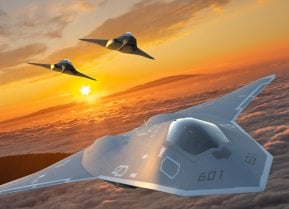China's Great Leap Forward on Hypersonic Missiles: 'Mach 5' Threat to the U.S. Military
China is challenging the notion that it is merely an imitator, demonstrating significant technological advancements, particularly in hypersonic weapons.
Summary and Key Points: China is challenging the notion that it is merely an imitator, demonstrating significant technological advancements, particularly in hypersonic weapons.

-With the world's largest and most sophisticated hypersonic wind tunnel, China has developed advanced prototypes and is outpacing the U.S. in practical applications of this technology. In 2021, China surprised U.S. intelligence with a hypersonic glide vehicle test that highlighted its capabilities.
-These weapons, capable of speeds up to Mach 30 and extreme maneuverability, threaten to destabilize U.S. deterrence strategies. As China enhances its hypersonic arsenal, the U.S. struggles to keep pace, raising concerns about national security and military preparedness.
China's Advanced Hypersonic Weapons: A New Threat to U.S. Security
The Chinese, we have been told by our betters, are imitators rather than innovators.
Well, that little self-serving slogan our vainglorious elite have been saying about China for the last 30 years should have been put to rest long ago. Sadly, it is a falsehood. As Oded Shenkar’s 2010 analysis of imitative versus innovative firms showed, imitators outnumber innovators. What’s more, imitators often outlast innovators—and even out-innovate the innovators over time (eventually absorbing the innovators into their firm).
This applies as much to private firms as it does to what Ted C. Fishman dubbed as, “China, Inc.”
China has been fulfilling Mao’s 1949 proclamation for his regime to, “catch up to Great Britain and beat the Americans.” Mao was not only speaking geopolitically. He was also talking about the race for superior technology and in the economy.
For all the claims about how Mao’s successors, Deng Xiaoping, Jiang Zemin, and Hu Jintao, broke from his style of leadership (and how Xi Jinping is now returning to that dictatorial model), the fact remains that Mao’s vision for China becoming the dominant world power at America’s expense was shared by all of China’s communist leaders.
Today, China is living up to Mao’s dictum.
China is Keeping Pace with America in the High-Tech Sector
In key technological domains, the People’s Republic of China is both catching up to the Americans as well as, in some areas, outpacing the Americans. While the United States and its Western allies remain competitive, the longer China can keep pace with—and move ahead of—the US in key sectors, the more likely it is that deterrence will collapse. China, believing it has mastered technologies and developed tactics beyond whatever the Americans have, will be more inclined to risk war with the Americans.
After all, Beijing believes that the United States is a spent and declining power. Coupled with the fact that China is moving ahead of the Americans in critical technology areas, Beijing will seek to deploy those advanced technologies against the unprepared Americans sooner rather than later.
China Ahead of America in Hypersonic Weapons
This reality is most obvious in the arena of hypersonic weapons.
China is home to the largest, most sophisticated hypersonic wind tunnel which can simulate conditions at Mach 30. Due to its size and sophistication, China can build large, fully operational prototypes and test them in ways that even the Americans, who have been experimenting with hypersonic technology for years, cannot do. China can, therefore, cut down on research and development time, allowing for China rather than the United States to take the lead in developing practical uses for this technology.

A hypersonic vehicle can fly up to five times the speed of sound, which is not as fast as some of the intercontinental ballistic missiles (ICBMs) in the arsenals of the world’s great military powers. But the fact that these weapons are far more maneuverable than conventional missiles means that tracking—and shooting them down—is next to impossible.
“We Don’t Know How They Did This”: China’s Hypersonic Weapons Test in 2021
In 2021, China’s military surprised US intelligence when they launched a hypersonic glide vehicle into low-Earth orbit (LEO). The hypersonic weapon circled the Earth and then came down within 20 miles of its intended target in China’s Gobi Desert.
According to unnamed US intelligence officials at the time, “We have no idea how [China] did this.” China’s hypersonic arsenal is significantly larger and more advanced than that of the United States (China’s arsenal is second only to that of Russia’s, which has both built and effectively deployed hypersonic weapons repeatedly in its illegal war against Ukraine).
China’s hypersonic weapons are, therefore, inherently destabilizing and completely upends the US strategy of deterrence. Paired with China’s superior mass production capabilities, this weapon alone could do significant damage to US military forces that might be deployed against the inevitable Chinese invasion of Taiwan.
America is On the Hypersonic Weapons Struggle Bus
Plus, the hypersonic weapons China is building could directly threaten the American homeland in ways that not even conventional nuclear weapons can.
For example, a hypersonic weapon launched from China could be vectored toward targets inside the United States along a southern polar route, thereby ensuring that whatever rudimentary missile defense systems the Americans possess would be negated, since most of those systems are aimed at stopping missiles coming in from the northern polar trajectory (from Russia, for instance).

The Americans, meanwhile, are still struggling to test whatever hypersonic weapons they’ve been building for the last several years. And given how strained America’s defense industrial base already is, possessing hypersonic capabilities is going to prove far more difficult for the Americans than it has been for either the Russians or China. More dangerously, the US lacks adequate countermeasures to defend its homeland and its forces from Chinese hypersonic attacks.
About the Author
Brandon J. Weichert is a former Congressional staffer and geopolitical analyst who is a contributor at The Washington Times, as well as at American Greatness and the Asia Times. He is the author of Winning Space: How America Remains a Superpower (Republic Book Publishers), Biohacked: China’s Race to Control Life, and The Shadow War: Iran’s Quest for Supremacy. Weichert can be followed via Twitter @WeTheBrandon.
All images are Creative Commons and/or Shutterstock.


